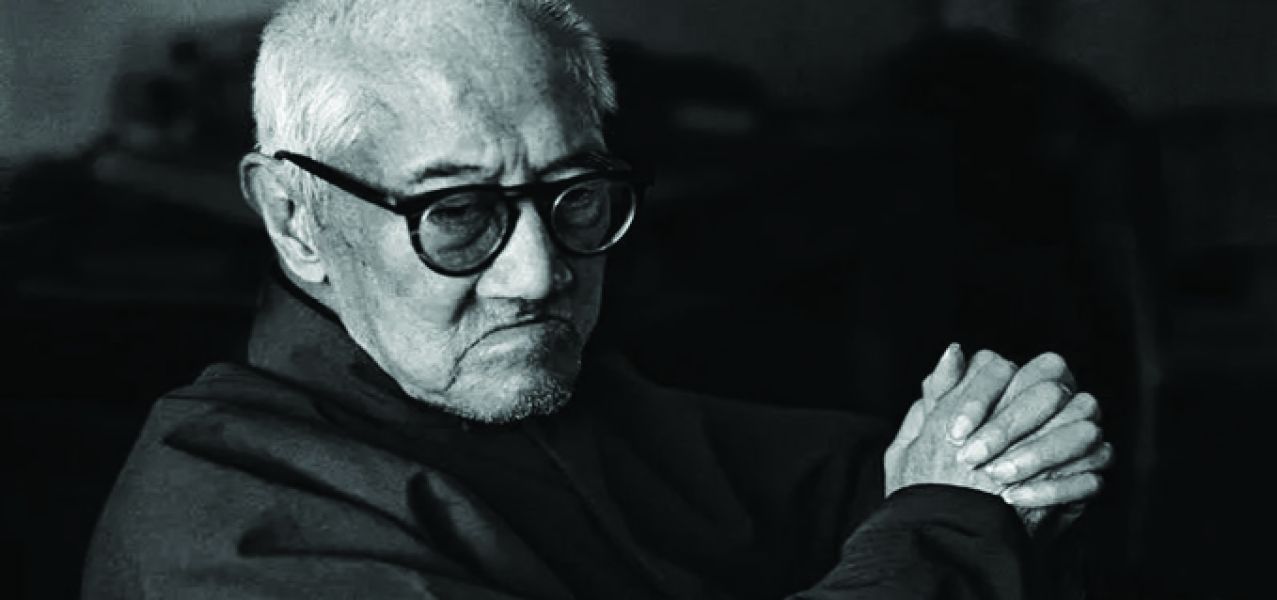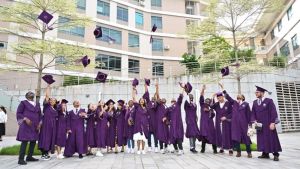
Johnnie Got His Gun, While Liang Took Up the Plough: Nostalgia in the United States and China, Then and Now
He brung [sic] that gun for protection, and to this day if he didn’t have that gun, my son would’ve been dead.
— Wendy Rittenhouse, mother of Kyle Rittenhouse (December 2021)
On 30 November 2021, the twenty-ninth US school shooting of that year (of a total of 32), was carried out in Oxford, Michigan, by a 15-year-old who had reportedly received a gun as an early Christmas present from his parents. Soon afterward, the media discovered a 2016 Facebook post addressed to Donald Trump by the shooter’s mother, Jennifer Crumbley, in which she vents anger at immigrants and minorities for allegedly reaping unfair advantages at her family’s expense and eagerly anticipates Trump’s promise to build a border wall and ‘make America great again’ (MAGA). This incident was soon followed by the acquittal in the murder trial of another teenage shooter, Kyle Rittenhouse, in Kenosha, Wisconsin, and his subsequent ‘victory tour’ with his mother, Wendy, to visit Trump at his Florida home, Mar-a-Lago. One feted by a former president, the other facing decades in prison, these two young killers’ fates may ultimately diverge, but the wider contexts in which each acquired his gun, and pulled the trigger, are eerily similar.
It is no accident that both families live on the fringes of once-prosperous industrial cities (Detroit and Milwaukee) now turned into ‘sacrifice zones’ blighted by the detritus of deindustrialisation. In both their words and their deeds, the Crumbleys and the Rittenhouses blame their personal difficulties on immigrants and minorities, while casting a wistful gaze to bygone days when working-class wages were decent and jobs plentiful—at least for white males. For many progressives, nostalgia for the prosperity of 1960s Motown (Detroit) and other erstwhile manufacturing centres is similarly strong. Few are the voices of those looking further back in time for potential answers to the madness of children killing children, or seeking, as did the legendary Detroit-based Chinese-American activist Grace Lee Boggs (1915–2015), to repair post-industrial landscapes through gardening collectives that attended to the most basic human needs of food, clothing, and shelter—all to the rousing soundtrack of Aretha Franklin and other Motown legends.
Liang Shuming and the May Fourth Precedent
In fact, Boggs’ and her fellow activists’ efforts were anticipated in a time and place where social peace had deteriorated even more visibly than in the contemporary US Midwest—that is, China, circa 1920. After the decade of chaos that followed the 1911 revolution, the May Fourth (1919) generation mostly favoured making a clean break with the past to chart a new course for achieving economic and cultural rejuvenation. Nonetheless, a few voices of that revolutionary era found inspiration in Confucian and Buddhist teachings and practices and advocated for their revival as antidotes to the social dissolution that was exacerbated, in particular, by the geographic and demographic inequities wrought by the very industrial modernisation that was championed as the key to China’s future. Just as bicoastal US ‘digerati’ oligarchs who are oblivious to the suffering of those in so-called fly-over country wield vast economic and political powers today, and an apathy that leaves children in Oxford or nearby Flint, Michigan, to their own devices—whether that is semiautomatic weaponry or lead-laced drinking water—the concentration of wealth and power in modernising cities like Shanghai, Tianjin, and Hankou left rural hinterlands far behind. Thus, China circa 1920 holds surprisingly relevant lessons for the world today—not only the potential for momentous revolutionary change, but also for how nostalgia might be marshalled as a strategy for healing the putrid decay out of which xenophobia and violence have sprung in post-industrial regions of the United States and elsewhere.
About 1890, the literary celebrity Yuan Zuzhi (1827–98), grandson of the poet Yuan Mei (1716–97), lamented that Shanghai had adopted the consumer tastes and modern production modes of European cities like Paris, from which he had recently returned:
A million bolts of precious silk
Cannot buy up all of the Western products in this springtime town
When will we ever go back to simpler, more authentic ways?
The clear-eyed bystander is wracked with sorrow.Author’s Note: This tiny patch of land—the most wasteful and extravagant in all of China—brings dread to anyone concerned with the fate of the world. (Wang et al. 2003: Vol. 4, p. 2808)
Although Yuan expressed admiration for the prosperity and general state of society he witnessed during his stay in Europe, the displacement of traditional silk and other native manufactures by Euro-American goods and technologies clearly perturbed him. By the early 1900s, however, ambivalence such as his had faded as younger generations came to accept the presence of modern industries and to actively advocate for their further expansion.
Among the relatively small number of sceptics who remained wary of such trends, one stands out: the renowned scholar-philosopher and activist Liang Shuming (1893–1988). As late as the 1970s, Liang expressed varying degrees of unease about what industrial transformation had wrought in China, whether along Euro-American capitalist lines or later based on the socialist model pioneered in the Soviet Union. His dubiousness towards industrialisation—primarily its cultural and sociopolitical implications, but also extending to the natural environment—echoes that of Yuan Zuzhi and other predecessors of the late-nineteenth and early-twentieth centuries.
Importantly, Liang Shuming did not make a bogeyman of Euro-America in totality and found much to praise in the ideas of some of his non-Chinese contemporaries. He perceived that the core of his thinking—elevating ‘nature’ (自然), which he interpreted as human interconnectedness with the 10,000 things, along with ‘life’ (生命), as the guiding lights of human action—was fully compatible and even nearly identical with certain trends in Euro-America:
In my way of thinking, the fundamental concepts are life and nature. I view the universe as a living entity. All things take nature as their leading principle. I share this with [Henri] Bergson and [John] Dewey, both of whom were deeply inspired by the idea of life, perhaps because they were influenced by their studies in the life sciences while in the process of formulating their philosophies. (Li 2013: 145)
As the foil for this overarching ideal of organicism, Liang denounced the ‘mechanical character’ (机械性) that pervaded modern industrial societies, against which Dewey and Bergson had also rebelled. Modern (Western) medicine, for example, has
a tendency to view the human body as a composite of discrete parts, and to treat illnesses as if this were no different from repairing a machine. Chinese medicine, at least that which could refer to as learning, is permeated by the concept of life, and this is precisely what distinguishes it from Western medicine. (Li 2013: 147)
As such, he alleges modern science tends to regard the human mind itself ‘mechanically’, unlike in premodern China and India, where the mind was deployed towards fully crafting the ‘life of the self’ (自己生命), instead of exhausting its powers in the service of mathematical formulae or other ‘external’ pursuits (Li 2013).
Liang conceded that the tendency of Chinese medicine and other indigenous practices to examine problems holistically, without subjecting them to analytical deconstruction, had encouraged a metaphysical obscurantism (玄学) in this and other fields of practical endeavour, which resulted in the neglect of fundamental needs like feeding and housing a rising population. In his magnum opus, The Essential Meaning of Chinese Culture (中国文化要义, 1963), Liang notes that by focusing their intellectual energies on contemplative pursuits, and not on developing a more scientifically based agriculture or other disciplines with practical applications, traditional literati had failed to do enough to improve the sustenance (养) of society. Yet despite these shortcomings, the literati’s ideals of harmonious, peaceful social relations, and indeed what Liang elsewhere referred to as the overwhelmingly ethical character of Chinese culture (Liang 2013), had contributed immeasurably to humanity as a whole:
Fundamentally, what is to be prized in the ancient Chinese [for their contribution to] the life of humanity, is how they acquired knowledge through kindness and generosity, how they embraced questions of peace and tranquillity within their hearts, and then, through the difficult process of living them out in practice and fully realising their inner natures, they came to a deeply personal understanding, so that the effort of self-cultivation overshadowed virtually all else in their lives. (Liang 1963: 273)
Putting Theory into Practice
While advocating spiritual and moral renewal through reviving the indigenous values of selflessness, reciprocity, and interpersonal trust, and praising the contemplative orientation of his forebears, Liang was not content to remain an armchair theorist. From the mid 1920s to the late 1930s, he made several attempts to put his ideals into practice as a leader in the grassroots Rural Reconstruction movement (乡村建设). His involvement in this ambitious endeavour began as a search for alternatives to what he regarded as the enslavement and impoverishment of the peasantry by emerging forms of capitalist exploitation that had severed villages from their formerly relatively equitable relationships with regional population centres (Li 2013).
Liang’s attempts to restore political and economic autonomy to rural communities came to fruition during his stint as the director of the Rural Reconstruction project in Zouping County, northwestern Shandong Province, in 1931–37. During Liang’s tenure there, Zouping made demonstrable progress in raising literacy rates and agricultural yields, while lowering infant mortality and communicable diseases, and achieving yet other markers of material and social betterment. By 1936, more than half the prefectures in Shandong had adopted this model, and it was on the verge of province-wide implementation when the looming threat of Japanese invasion brought it to a halt. Once the Sino-Japanese War began in earnest, Liang evacuated to the interior. In the unsettled conditions that followed the war, he, like prominent rural reformer James Yen (Yan Yangchu, 1893–1990), was unable to fully realise the goals of the movement before the communist revolution swept them all aside.
Liang considered the rural villages (乡村) to have borne the greatest brunt by far of what he regarded as the scourge of urban civilisation (都市文明) that had been adopted under Euro-American tutelage. Their political and economic disempowerment at the hands of the elites of Shanghai and other modernised cities had deprived rural villagers of the means of improving their lives. Hence, to Liang, it was of the utmost importance to restore political autonomy and economic self-determination to rural residents and to prevent their exploitation by predatory urban elites who had no interest in the concerns or welfare of the villages:
Politics takes the village as the basis. If the root of all rights rests in the [rural] folk, and political power is exercised by these masses, then the power to rule will begin in the village, power cannot concentrate, and classes cannot form. The organisation of the nation’s villages will follow a single pattern, and though power is dispersed, this will not harm our national unity. (Liang 1937: 287)
As the scholar Ma Yong (2008) notes, Liang saw this enterprise first and foremost as cultural work, necessary to counter the insidious influence of Europe, the United States, and the Soviet Union—all of which were providing inappropriate models for rural development (Liang 1937). Although he urged the abolition of private ownership of land, and thought bourgeois capitalism was ‘outdated’, he also regarded the Russian method of agricultural collectivisation as ‘mechanical’ and, thus, unnatural (Alitto 1979).
Most importantly, the core of this cultural work lay in spiritual renewal through the revival of the values of reciprocity and selflessness that had been eroded by Euro-American individualism. This required a tempering of and control over materialism:
What does it mean to say that people’s lives improve? The improvement of human life means not considering the enjoyment of good fortune as a worthy end, but instead worrying that one’s own actions might fail to conform to moral principles. It is as the ancients said: ‘While eating, do not seek satiety, in dwelling do not seek comfort, and be sensitive to events and careful in speech; if you act thusly, you will be correct in your attainment of the Way.’ (Liang 1937: 72)
The seeds of this activist phase of Liang’s career are evident in his analysis of the technological developments that were making inroads into China and across the industrialised world. Commenting on the postwar worldwide economic dislocations of 1918–20, he placed blame on the effects of industrial mechanisation and the spiritual vacuity that was its ultimate cause:
The machine is truly the demon of the modern world. But it is the direct consequence of the Westerner’s attitude toward human life. On the one hand, he demands material happiness, and seeks to utilise nature to conquer nature. On the other, he uses his rational, analytical brain to produce science, and combines these together to invent machines. (Liang 1989: 162)
It was only a matter of time before society collapsed under the onslaught of a Darwinian economic system that
violates human nature—that is, humanity [仁]—to the point where people can no longer endure it … Everyone has had their vitality ripped to shreds by the Westerner. His unnatural attitude, his machines, his desiccated, deadened lifestyle all spring from this source. (Liang 1989: 165)
In writing these words almost simultaneously with the May Fourth leaders’ calls to heed ‘Mr Science’ (赛先生) and ‘Mr Democracy’ (德先生) to achieve national salvation, Liang’s dissonance with this emerging consensus is striking. He shared more in common with some of the Euro-American writers who were similarly disillusioned by the tanks, poison gas, and other technologies of mass slaughter that militaries deployed in World War I and other recent wars, such as Rudolf Christoph Eucken (1846–1926), whom Liang singled out for praise for his advocacy of renewal through Geistesleben (‘spiritual life’). Even Jean Jacques Rousseau received Liang’s qualified approbation for understanding that European thinkers ‘without exception strangle, dissipate, murder, corrupt, or bring chaos to life’, thereby harming its vitality. Nonetheless, none could equal Confucius, whom Liang credited with establishing a Way that fulfilled the needs of life just as completely in Liang’s day as it had two and a half millennia before (Liang 1989).
In Liang’s subsequent career as a rural reformer, he may have attenuated his views to the extent of embracing agricultural or biomedical advances where and when they contributed to rural development, but he warned against the uncritical adoption of either machines or the mechanistic outlook that produced them. He remained true to this vision through the subsequent decades of his very long life and re-emerged from obscurity in the 1970s to reaffirm his attachment to and nostalgia for the Confucian values that had just gone through their most lethal drubbing of all, including the defacement of Confucius’s tomb at Qufu during the Cultural Revolution.
From Nostalgia to Solastalgia
Paying due respect to Mr Science (and Mr Democracy) certainly could produce a more humane and liveable world, but mass shootings by young people enamoured with semiautomatic weaponry remind us that the malignancy of machine fetishism against which Liang warned has not been excised, let alone healed. Liang did not have the opportunity (or the interest) to watch the 1919 silent comedy Johnny Get Your Gun, a forerunner of the vapid celebration of firearms that Hollywood has been churning out ever since, but his principled dissent from prevailing sentiment suggests a prescient understanding of what could unfold if the deadening hand of mechanisation—and its corollary, mechanised violence—was not resisted. In the United States, a revulsion against industrial-scale slaughter briefly emerged in the 1960s, culminating in films such as the classic Johnnie Got His Gun (1971, based on the 1939 Dalton Trumbo novel of the same name). But another 50 years later, as fans of gun-toting screen idols once again reach for their weapons, the world holds its collective breath. The United States and its Anglophone allies are still groping for their weapons—including submarine-borne nuclear missiles—in a scaled-up version of Rittenhouse-style vigilantism against the phantom targets of their fetid imaginations. Let us hope that the eminently pragmatic idealism of Liang and Boggs will prevail over the deranged, MAGA-fuelled nostalgia for the industrial behemoths and hegemonic geopolitical brinksmanship that have left such wreckage—social, environmental, and spiritual—in their wake.
Finally, even if the United States somehow manages to avoid descending into fascism and reins in its tens of millions of cultish gun-worshippers, looming climate collapse may render any such reprieve merely temporary. Despite the encouraging announcement at COP 26 in November 2021 that China and the United States (who are together responsible for 40 per cent of annual greenhouse gas emissions) will work together to reduce carbon emissions (US Department of State 2021), many climate scientists see global temperature rise exceeding 1.5ºC as virtually inevitable. Meanwhile, although Xi Jinping and Hu Jintao before him have steadfastly promoted rural development (Gu 2019), including significant environmental remediation, critics note the superficiality of the government’s neotraditional ‘beautiful village’ campaign, such as in the gentrified rural enclaves that inordinately benefit wealthy investors over the original village inhabitants (Guo 2022). And regardless of lofty rhetoric, real estate speculation continues to drive the construction of what is already an estimated 70 million excess (that is, vacant) housing units and the massive production of concrete and other carbon-emitting materials this has entailed.
As climate chaos intensifies with each passing year, it is no wonder humanity’s collective mental health deteriorates commensurately, leading the Australian eco-philosopher Glenn Albrecht (2020) to coin the term ‘solastalgia’—a mourning for the loss of formerly stable and flourishing local environments—to give a name to the trauma of the Capitalocene. Political and sociocultural crises of the early Republican era in China led Liang Shuming to seek remedies in traditional rural settings, and the decline of the American Rustbelt turned Grace Lee Boggs into an urban gardener. Perhaps solastalgia can resuscitate our innate ethical perspicacity—whether Mencian, Augustinian, or Seventh Generational—that could guide us all towards a survivable future. If not, our children may be condemned to an endless cycle of Kyle Rittenhouse, Jennifer Crumbley, and Trumpian pathological behaviours that will only accelerate our descent into environmental oblivion.





